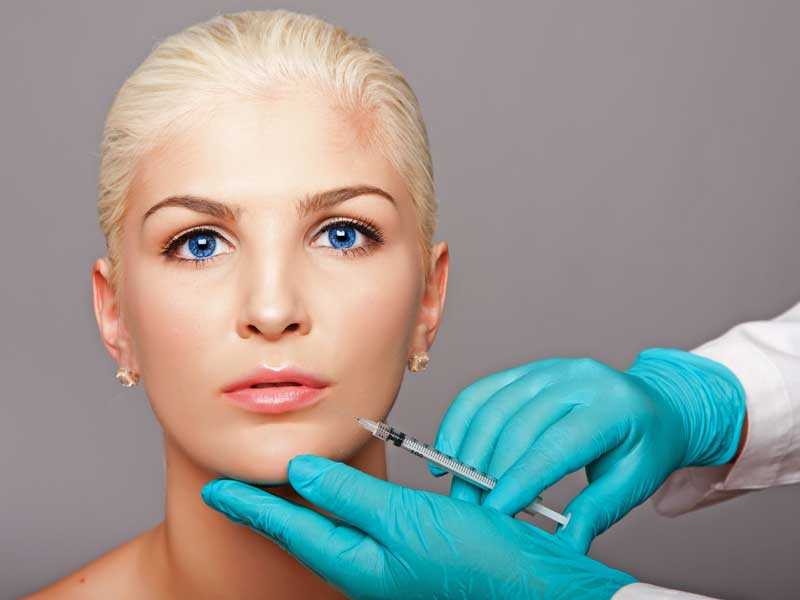

03
Jul
How Does Botox Work For Migraines?

Talking about Botox, the treatment of wrinkles may display in your mind. But let me tell you, it can be a potential game-changer in treating migraines too. You may be curious to know how does Botox work for migraines?
It is not fully clear how it works. However, most say that Botox is used to inject, targeting specific muscles that are responsible for migraines. It temporarily blocks certain pain-transmitting chemicals. Thus, this treatment brings some much-needed relief to those who suffer from migraines.
Who Can Take Botox For Migraines?
Migraine is a neurological state that is different from usual headaches. It is more than a bad headache. There isn’t a single cause that fits all. It’s a complex puzzle that includes a combination of aspects.
People who have chronic migraines can take the Botox treatment. It’s a kind of neurological condition that occurs on a frequent basis. Mostly, a person can experience headaches for at least 15 days per month.
Migraine headaches are typically intense and throbbing, often affecting one side of the head. The common symptoms are nausea, vomiting, sensitivity to light and sound, and in some cases, visual disturbances known as auras.
There are no exact causes of chronic migraines. But it involves a combination of genetic, environmental, and neurological factors. It mainly influences the brainstem and the trigeminal nerve, which is a major pain pathway.
In a study, patients with chronic migraines reported that they experienced fewer headaches days after taking the Botox shots. That means this treatment can cut down the total number of days of headaches.
So, it’s crystal clear that if you have chronic migraines, then you can take Botox treatment. But it is important to consult with a healthcare professional or doctor for a proper diagnosis and you should discuss taking Botox treatment.
How Does Botox Work For Migraines?
Botox proves its effectiveness in reducing the frequency and severity of migraines in adults. It aims to prevent or decrease the occurrence of migraine attacks rather than providing immediate relief during an ongoing episode.
Doctors claim that Botox works for migraines as it blocks the release of acetylcholine, a neurotransmitter that sends pain signals to your brain. Botox works like an obstacle in that pathway and stops chemicals from transferring to the nerve endings.
Botox is injected into the forehead, temples, neck, and shoulders. It reduces the attack of triggering a migraine by blocking communication between nerves and muscles.
However, the results of Botox are temporary. It’s an ongoing treatment and a patient needs to take the treatment for a fixed period.
Also, it doesn’t give instant migraine relief after one injection. You may need to wait a few weeks to experience relief. The most common practice is to take Botox injections every 12 weeks or a minimum of 4 times per year.
It’s a little mystery why Botox works that way. Still, patients experience their headache days by roughly 50% after two times of shots.
Though Botox treatment doesn’t fully prevent migraines, you can frequently experience breakthrough headaches. In this case, patients have to take alternative treatments like oral medications.
So it is entirely your personal preference. You can choose botox treatment or other prevention treatments according to your healthcare provider.
Is Botox Safe For Migraines?
Botox treatment aims not just to provide immediate relief during an attack. It reduces the frequency and severity of migraines over time. The bacterium Clostridium botulinum is the source of Botox which is a blocker of neurotransmitter chemicals.
Botox treatment is an effective therapy for migraines. It can reduce the attack frequency of migraines. It’s been an FDA-approved treatment, especially for chronic migraines since 2010.
There have been rigorous clinical trials and studies evaluating the safety of Botox for migraines, but individual responses may vary. So you should always consult with a healthcare professional to determine the best course of action for your specific situation.
The treatment is only for chronic migraines, not for other types of headaches. Also, it is not for children or adolescents, only for adults who have 15 or more days of migraine pain.
Side Effects Of Botox Treatment For Migraines
Though Botox injections for migraines are safe, some may carry some potential side effects. There are hardly any severe side effects from Botox injections. So it is important to know before going for treatment.
- You may experience temporary pain, redness, bruising, or swelling at the injection site. These reactions typically resolve on their own within a few days.
- Some may have breathing problems, difficulty speaking, and vision problems.
- Botox works by temporarily relaxing the muscles, and this can result in temporary muscle weakness in the treated areas. This weakness is usually mild.
- Some individuals may experience temporary neck pain or stiffness after Botox injections.
- In rare cases, individuals may experience flu-like symptoms such as fatigue, malaise, or a mild fever after Botox treatment.
Frequently Asked Questions (FAQs)
People’s responses to Botox in treating migraines can vary. The effects of Botox usually take 2 to 3 weeks to become apparent.
Doctors inject Botox into 7 specific muscle areas around your head and neck. They are on the forehead, the temples, the neck, the bridge of the nose, the back of the head, and just above the shoulder blades in your upper back.
The success rate of Botox treatment for migraines is about 50-80%. Some patients get more successful results.
Most companies cover one-third of the cost of Botox injections for migraines. However, it depends on your plan and your insurance provider.
Conclusion
Nowadays, Botox is an effective treatment for migraines. It is a great way to reduce the frequency and severity of migraine attacks. Since there are less to no side effects, one can take the treatment without any worries.
Botox may play an increasingly significant role in the management of migraines. It can improve the quality of life for those affected by this debilitating condition.





